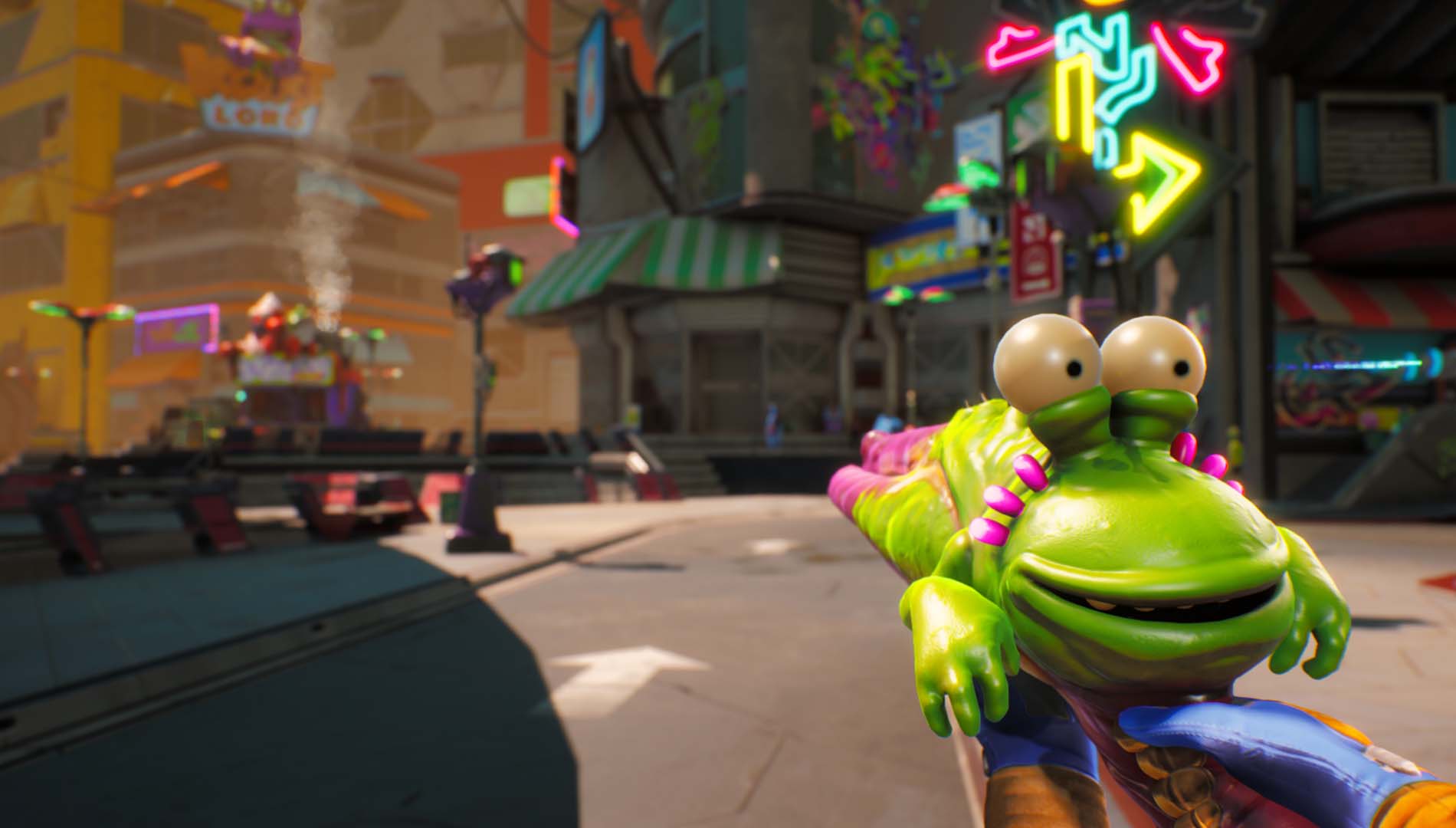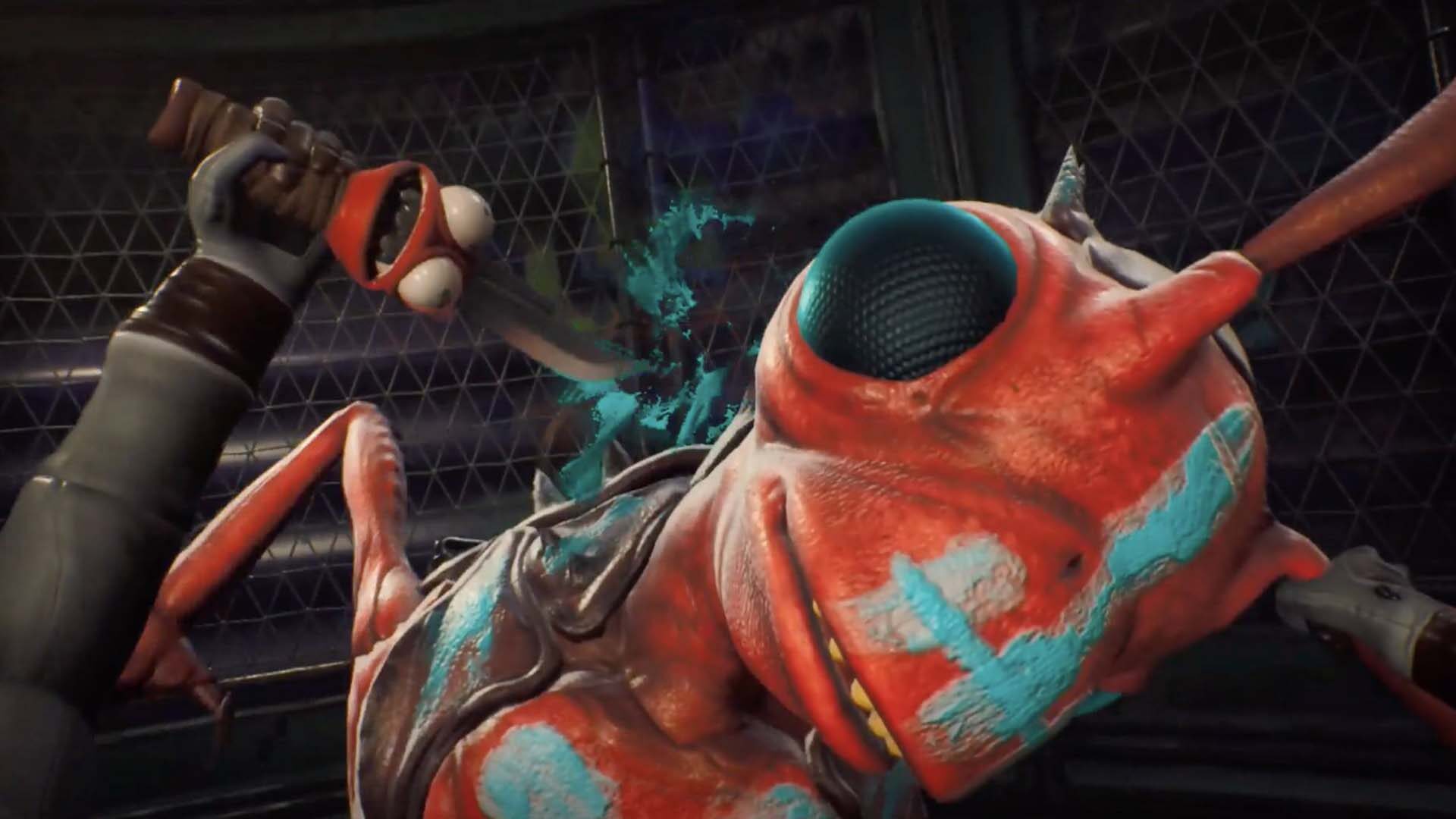As much as the Szechuan Sauce debacle and the general edgelord culture surrounding Rick and Morty has soured me on that show over the years, I still love co-creator Justin Roiland’s sense of humor and the cartoon’s iconoclastic deconstruction of sci-fi tropes, taking them to their natural, absurdist extremes. Starting with the VR-focused Trover Saves the Universe, and now in the upcoming High on Life, the studio Roiland co-founded with Tanya Watson has turned that satirical eye towards video game clichés, poking fun at the dumb things games have to do in order to work properly. In most games, when you walk away from a talking NPC, they just keep on following that same train of thought until you’re well out of earshot. But start walking away from one of the googly-eyed alien NPCs in High on Life and they’ll rightfully call you out for being the rude jerkoff that you are.
Players might have cut Trover some slack for being a more novel VR experience and Squanch Games’ first solo development effort. Trading in-depth gameplay for sharply written comedy seemed fair in that case. As a more traditional first-person shooter, High on Life might not get that same leeway. Sure, it can be a vehicle for jokes, but at the end of the day it has to be a solid gaming experience. Otherwise, the jokes don’t really have a leg to stand on.
I have to admit that I wasn’t expecting a hardcore shooter experience when I first set out in my hour-long hands-on preview of High on Life. After all, it is a game about a bounty hunter and his talking guns voiced by the likes of J.B. Smoove, Betsy Sodaro, Tim Robinson, and Roiland himself. Conceptually, it sounds like something every stoner has thought at least once in their gaming careers. “But, like, what if the guns could talk?” It’s not the kind of idea that feels like it can lead to meaningful game design. Besides, how many weapons can you realistically put into a game where each one is voiced by a well-known comedian?

And yet, what really surprised me about High on Life was how much could be done with very little. During my demo, I only had access to two of the game’s four weapons: Kenny (voiced by Roiland) and Gus (voiced by Smoove). Kenny fulfills the standard pistol archetype while Gus is more of a shotgun, but there’s more to both weapons than first meets the eye. Aiming down the sights gives both weapons a secondary fire; Kenny’s is simply a super-accurate shot, but Gus turns into a vacuum cleaner that can stun enemies and pull them towards you.
On top of all that, each weapon has a special attack that really gives it some character. Kenny’s glob shot is basically a grenade that launches enemies into the air. If you’re quick enough and your aim is good enough, you can infinitely juggle enemies in the air by shooting them. Gus’s special attack is a disc that will bounce between foes before heading back towards you. Time a melee strike correctly, and you can send the disc back in to do more damage. You can also upgrade these attacks and unlock new variants; during my demo, I purchased an upgrade to the glob shot that sent out multiple globs as opposed to just one.
With those two weapons alone, combos already start to reveal themselves. Launch enemies into the air with Kenny’s glob shot, switch to Gus, shoot out your killer disc to juggle them, then use his vacuum for a devastating final blow. Or, you can play it more like a traditional shooter by using cover and claiming space, and that works, too.
But that’s before you start mixing in some of the game’s movement abilities. Most notable is the super slide, which is a boosted slide that you can use to tackle enemies like you’re gunning for a red card in soccer, and get out of a bad position. You also have a dash that’s useful for dodging incoming projectiles or covering a wide gap while platforming. Finally, you can use a grappling hook on certain ledges and giant insects to swing around the map, making combat encounters feel a bit like first-person Ratchet & Clank.
Insomniac’s platformer isn’t the only comparison you can make to High on Life. Squanch clearly took inspiration from games like Halo, the most recent Dooms, and even Metroid. You have a shield bar and a health bar (Halo), an execution move that heals you (Doom), and a few platforming puzzles that you will need to return to with certain weapon abilities to solve (Metroid). If you’re a seasoned FPS player, the influences will seem obvious, but the way that the developers have combined all of these elements with the core weapon mechanics gives High on Life its own sense of identity. And, remember, that’s just with two of the game’s four distinct weapons, and without getting into the different upgrades you can purchase.

As fun and dynamic as the gameplay is, I don’t know that it would be enough on its own. The main draw for many players will be everything else that goes into High on Life. As far as the comedy is concerned, that’s going to be subjective, but I thought the game was funny enough. More importantly, it has personality. It’s not a bunch of winking, self-aware references to video game tropes, although there is some of that. The characters themselves, especially Kenny and Gus, have strong identities (although I have to say I am getting fatigued with Roiland using his Morty voice yet again), and it doesn’t hurt that the other weapons and NPCs you’ll meet are voiced by the likes of Tom Kenny (SpongeBob himself), as well as internet-famous animators like YouTuber Joel Haver and Smiling Friends’ Zach Hadel and Michael Cusack.
The most effective aspect of High on Life, however, might be the art and world design. As described to me, the main concept behind the art direction is “The Muppets meets Blade Runner,” to which I’d add Total Recall (the original, not the remake) and Avenue Q. Rather than sticking to one subgenre of sci-fi, High on Life features elements of cyberpunk and dystopia, with a healthy dose of messed-up alien creatures to give it that Roiland charm. Above all, High on Life feels like it takes place in one of Rick and Morty’s infinite universes.
My favorite part of the demo, however, was when I got to load in what is called a “warp world.” Throughout each level, you’ll find areas where you can insert a floppy disc that you can purchase from vendors in the game to spawn what are essentially bonus levels. Created during a “game jam” session where the developers could design whatever they wanted, each world has a fun little gameplay moment or short narrative attached to it. The one I got to see was basically a miniature city, where I was greeted by a small man in a hot air balloon. I don’t want to give too much away, but let’s just say that, after I was through with the town, I would have made Godzilla blush. It suffices to say that the tiny man in the balloon was not happy with me.
More than anything, these warp worlds felt like it exemplified the best product of Squanch Games’ irreverent viewpoint. They exemplify the kind of improvisational humor that made Rick & Morty’s first “Intergalactic Cable” episode feel so fresh and exciting. The rest of High on Life was promising, but discovering every warp world in the game is what has me really excited for the game’s launch next month.
Images: Squanch Games

Michael Goroff has written and edited for EGM since 2017. You can follow him on Twitter @gogogoroff.